automotive design
What Are The Different Levels Of Driving Autonomy?
As auto manufacturers race against one another to release self driving vehicles, motorists will soon be presented with all types of autonomous driving solutions. With so many options likely to be available, as well as some current models that already claim to offer self driving functionality, motorists should be aware of the technology’s various iterations – namely, the five levels of autonomy.

Level Zero: This is what we’ve been accustom to in vehicles right up until today. These vehicles are dependent upon full driver input, with the exception of automatic safety features which are designed to prevent or mitigate the impact of an accident.There is no degree of automation which goes into the driving process.
Levels One and Two: This next band of technology is a step up from complete dependence on drivers, to a system where support is offered to manouevere and adjust the speed of the vehicle. The important feature to distinguish this stage is that it is only support which is offered, as the driver will still need to maintain a connection with the car. In a way, this adds a degree of control and surety when changing lanes and activating cruise control, since prompts will be made to the driver to maintain their focus and thus keep the car operational.
Level Three: This is the threshold at which point the vehicle becomes responsible for controlling the driving functionality, as well as responding to the driving environment. This is also the level at which point motorists may begin to disengage from the vehicle without it shutting down. Motorists may still be required to respond to unforessen events or directional queries, however, by and large the vehicle can navigate more complex driving conditions. A number of car manufacturers are currently operating at this level, even though forecasts had the industry meeting this level much sooner. Tesla is among those currently very active in this space as a frontrunner.

Level Four: The car is now equipped to fully navigate itself and also react as necessary in the event of an emergency. Any human dependence or interaction is limited specifically to the activation process when turning on the system upon ignition, and in an advisory capacity if required for navigation input (e.g. route selection) – rather than requests. There are only a couple of players currently operating at this level, and that includes heavyweights Waymo, owned by Google’s parent company Alphabet, and another being Uber.
Level Five: The truly driverless vehicle. With level 5 capacity, a vehicle is capable of transporting its occupants without the need for a driver to be present. Similarly, the car may also be used without occupants or a driver as a remote vehicle to collect a person, or instead deliver an item to a specified address.
Importantly, the development in this space is taking place overseas, where the infrastructure and testing is in a better position to support development. Closer to home, not only do we need to see regulatory change, but also a sizeable shift in motorists behaviours. Until then, it’s a long waiting game for new car buyers hoping to take up a fully-autonomous vehicle.
BMW Brilliance

BMW has always been a favourite standout brand of mine, and BMW is forging new models and technology even as we speak. It has been a bit of a gruelling year-or-two with the covid shenanigans, and car manufactures are only one small segment of the global economic pie to have taken a sizable hit. The shortage of semiconductors has been, and still is, a problem because cars rely on these items for controlling anything from your electric windows to all the fancy driving assistance aids. However, the winds are changing, and the rebound is occurring. Luxury car marques like BMW seem to be doing very well, and even with the electronic chip shortages being a bit of an issue it seems that BMW will get through this period in fairly good shape. There is always a talking point re this special car marque; sometimes the designs might look great to some and not so flash for others, but there is always a gem being turned out from this great team of motoring designers and manufacturers. BMW cars are more often than not great to drive, good looking, practical and advanced cars.
In this covid recovery period, various chief financial officers recently mentioned that, for now, luxury marques like BMW would consciously undersupply demand levels, which seems a prudent, sensible path to take, as BMW new car prices are holding up very well – quite bullish in fact. The increased pricing power has already trickled down to the bottom lines for BMW and Daimler. Mercedes achieved a 12.2% return on sales in the last reported quarter, which was up from 8.4% in the same period in 2018 (2018 being of a period not affected by the pandemic or diesel emissions litigation costs). BMW achieved a 16% return on sales, which was up from 8.6% in 2018. BMW also reported a $5.7 billion net profit in the second quarter of this year, suggesting global auto markets are continuing to recover from the pandemic — particularly when it comes to luxury cars like BMW and Mercedes.
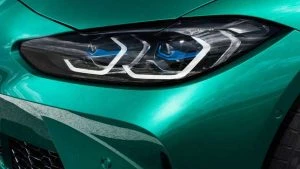
BMW M4 Minty Green
This is great news for BMW and car lovers in general, but what’s new in BMW’s box of tricks? A very cool thing that BMW revealed at the recent Munich Motorshow (early September 2021) was to be found in the BMW M4 corner, where this manic machine, with its impetuous acceleration, showed a jaw-dropping minty green sheen to its beautiful, sexy exterior. The M4 Competition wore a Mint Green paint job and sat upon gorgeous bronze 20-inch rims. Both of these options are available as part of the brand’s expanded BMW Individual customization line, which you can find on BMW’s online configurator, where more than 130 other paint options and eight different wheel options are available. This latest BMW M4 Competition also had a new fibre front splitter, a restyled rear bumper, a rear wing, and some unique side skirts that were all made with carbon fibre. Carbon fibre interior seating surfaces and trim pieces are also part of the online configurator. So, try before you buy!
The Munich motor show also allowed the public to preview a hydrogen-electric BMW X5 that is due to enter very-limited production in 2022. This is an exciting moment because the vehicle was first previewed in 2019 as the i Hydrogen Next concept. It’s currently in the prototype stage, and early this month it was confirmed with the go ahead, going by the name of BMW iX5 Hydrogen.

A hydrogen-electric vehicle is like a battery-electric vehicle, but instead of drawing power from electricity out of the charged battery the hydrogen-electric vehicle relies on a hydrogen fuel-cell stack to produce electricity power. BMW’s iX5 Hydrogen has the hydrogen fuel-cell positioned up front where it draws hydrogen from 2 tanks, one in the X5’s transmission tunnel and another under the rear seats. The tanks are made from carbon-fibre-reinforced-plastic and can hold about 5.9 kg of hydrogen at more than 10,000 psi. Tank filling takes only a few minutes. The hydrogen fuel-cell combines hydrogen with oxygen from the air to create electricity. This process only has water (H2O) as a by-product – Wow! The electricity primarily powers a single motor at the rear axle but is also used to charge a small battery that steps in from time-to-time to deliver extra grunt to the motor during high-load situations.
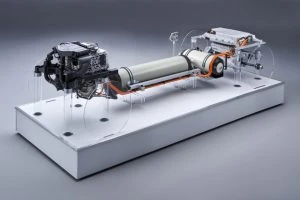
BMW iX5 Hydrogen Platform
The BMW iX5 Hydrogen will have a total system power output of 275 kW. The hydrogen fuel cell, on its own, generates about 125 kW. The vehicle’s aerodynamically shaped 22-inch wheels are wrapped in a new Pirelli tyre that is made from natural rubber and a wood-based synthetic fibre known as rayon. These two materials replace much of the petroleum-based synthetic rubbers used in modern tyres.
The extensive field testing has already started in earnest within Europe. Particular focus points have had the engineers examining how effectively the CO2-free drivetrain works in real-life conditions. Also, they are measuring metrics which include reliability, safety, and efficiency during everyday conditions to ensure that the new model is perfect for mass production. Hydrogen fuel cell technology has the potential to supplement internal combustion engines, plug-in hybrid systems, and battery-electric vehicles. The BMW iX5 Hydrogen has hydrogen tanks that can be filled quickly in only 3–4 minutes.
BMW states that the small batch of iX5 Hydrogen models that are destined to be built in 2022 will only be used for demonstration and testing purposes. BMW doesn’t expect to have any hydrogen-electric vehicles at dealerships until 2025 at the earliest and depending on the direction that the automotive markets take.
Newest off the showroom floor is the all-new BMW iX3 with its refreshed exterior design. The new BMW iX3 has a sexier appearance and introduces the M Sport Package as standard. BMW has achieved an impressive CO2 emission assessment for this next-generation iX3, and the vehicle boasts an exceptionally efficient drive system. Extensive use of secondary raw materials in the manufacture of aluminium castings and thermoplastics combines with the new iX3 boasting an absence of rare earth materials and the use of more green electricity in its production.
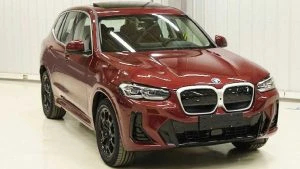
BMW iX3 2022
The BMW iX3 has a kidney grille that is larger still, and it has a single-piece frame that comes in Pearl-effect Chrome with blue accents to match with the BMW i styling cues. Its headlights have been made slimmer. It also boasts 19-inch black aerodynamic wheels, an automatic tailgate, adaptive suspension, a heated steering wheel, a panoramic sunroof, and Smartphone integration with Apple CarPlay and Android Auto.
BMW is a bit of a landmark in the automotive world, a benchmark, the perfect blend of performance, luxury and practicality. In the future, BMW wants to be ready to supply customers with their powertrain of choice, whether it be gasoline, diesel, battery or hydrogen. In the case of hydrogen, BMW sees it as an opportunity for customers that favour long-distance driving or who happen to live in regions without adequate battery recharging infrastructure.
I have so many favourite BMWs and other cars, including the 4.0-litre Falcons, which have rolled our roads over the last few decades of motoring, but let’s not be nincompoops and let’s embrace new ways of automotive power; let’s embrace the new BMW i technology.
Audi News
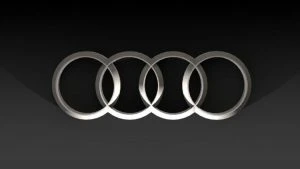
Audi has been pumping out some magnificent cars in the last few years, most of them being excellent petrol and diesel cars. What direction are they taking in the blending of hybrid technology and EV-only? The straight answer is that Audi is on the ball and have been introducing an exciting range of EV power into their brand nice and gradually, as they should.
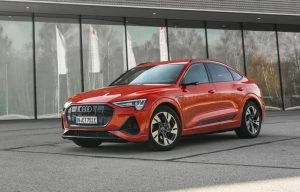
Audi e-tron S Sportback
The e-tron is, perhaps, the more widely identified model that Audi are making as fully electric cars. The e-tron is already nearing a new update, and the set of models we’re likely to see arrive sometime in 2022 are the Audi e-tron S and the Audi e-tron S Sportback. What is special about these two is that Audi e-tron S models carry two electric motors on the rear axle and one on the front and can generate a nearly instantaneous 370 kW of power and 973 Nm of torque in full boost mode for 8 seconds at a time. Because the 2 rear motors have been designed independently of one another, they can operate with the utmost precision and can help the driver power out of corners with the confidence of Audi’s special torque vectoring systems. In normal driving conditions, the front motor remains off until it is needed. When needed for ultimate performance and traction, the front electric motor flicks on and into action.
The new Audi e-tron S models boast wider bodywork than the standard models. They will be equipped with Digital Matrix LED headlights, where each light is divided into 1.3 million pixels and can be controlled with precision, opening up many new functions. As road traffic regulations allow, these digitized lights could include on-road lane markers and lightbeam functions that can dip around or below other cars. The matrix-design LED headlights come as standard, however.
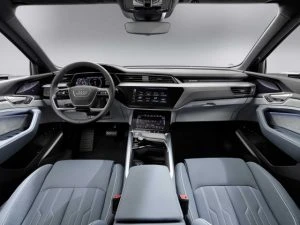
Audi e-tron S
Both of the Audi e-tron S models come standard with a 12.3-inch virtual cockpit, 3D satellite navigation imagery, predictive traffic light information, in-vehicle LTE-powered Wi-Fi for up to eight connected devices, a top-view camera, traffic sign recognition, Audi active lane assist with turn assist, Audi pre sense front, adaptive cruise assist and Audi phonebox with signal boosting capability.
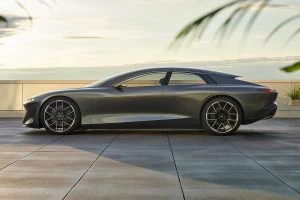
Audi Grandsphere Concept
Also hugely exciting for Audi fans is the Audi Grandsphere concept, a luxury sedan with an electric drive system. Magnificent comfort, which Audi liken to a first-class flight, will be the experience Audi is aiming for with Grandsphere. At 5.35 metres long, the Grandsphere sedan combines the luxury of private travel in ultimate comfort with a comprehensive onboard experience with Level 4 automated driving where the interior turns into a spacious sphere of experience without a steering wheel, pedals, or displays. Instead, the front of the cabin is a first-class lounging area with maximum space, more open views, and access to all the functions of a holistic digital ecosystem that the Audi Grandsphere will provide. This is a very ambitious car; however, with the rate of hybrid and EV technology becoming more and more readily available, and as we already live in an age where digitized everything is at your fingertips or voice control, the Grandsphere concept might not be too far from becoming a reality. I only hope that the fun and satisfaction of human ability and the experience of the real world will not be stifled by technology and virtuality.
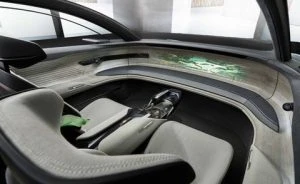
Audi Grandsphere Interior Concept
Alfa Romeo and Stellantis

There is change in the air for Alfa Romeo. At the beginning of 2021, a multinational automotive manufacturing corporation called Stellantis was formed on the basis of a 50-50 cross-border merger between the Italian/American conglomerate Fiat Chrysler Automobiles and the French PSA Group. The headquarters of Stellantis is in Amsterdam, Netherlands. Alfa Romeo will be among the first of the 14 brands of Stellantis vehicles that will take a full-electric approach to its new cars. Mentioned at a meeting recently, the new Stellantis group will see Alfa Romeo become a fully electric brand that will compete globally as early as 2027 – its key markets being that of China, Europe and the US.
It is possible that the first all-electric Alfa Romeo could be an electric subcompact crossover that will arrive 2023/24 and combine with similar models from Fiat and Jeep. Stellantis has announced plans to introduce four electric platforms that will eventually cover most vehicles across the company’s 14 brands, and the models should have a power range of 300 – 500 miles (480 – 800 km). Alfa Romeo will use a platform known as the STLA Large, which will also be used by Maserati. There will also be platforms known as STLA Small and STLA Medium. Stellantis says that Alfa Romeo will pursue two battery chemistries for its vehicles. Right-hand drive development was also to be assured, so all future EV Alfa Romeo models could easily be driven in Australia.
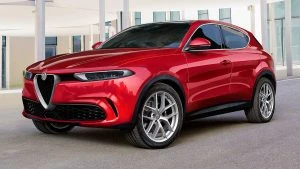
Alfa Romeo Tonale
Next year we should see Alfa Romeo offering its first plug-in hybrid, which will be exciting. I’m a big fan of hybrid technology. The model will most likely be a compact crossover based on the recent Tonale concept.
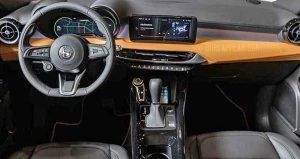
Alfa Romeo Tonale
Until the arrival of the Alfa Romeo Tonale, Alfa Romeo Australia will still enjoy the fantastic-to-drive Alfa Romeo Giulia sedan and Alfa Romeo Stelvio mid-size SUV. For 2021, the Stelvio SUV and Giulia sedan boast some more new technology inside the cars, which includes Level Two advanced driver assistance systems such as traffic sign recognition, intelligent speed control, active blind-spot assist and driver attention assist.
Currently, the entry level Stelvio puts out 148 kW of power and 330 Nm of torque from the 2.0-litre turbocharged petrol engine. You should be able to buy a new one of these for around the $65k mark.
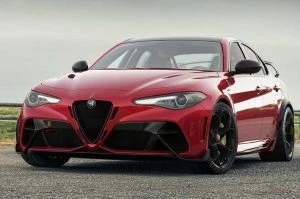
Alfa Romeo Giulia